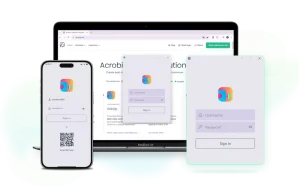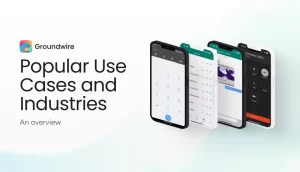How much does it cost to develop an app from scratch? The answer from a business perspective is far too much to be worth it. A “DIY” route would force you to develop networking infrastructure, audio and video support, and extra functions that the company needs. Doing so with no prior experience or equipment is not worth the hassle.
Instead of thinking about hardware and software, just keep your eye on creating a positive communication experience. You don’t have to think about the cost to develop a mobile app, for instance, if you can get all the features you need out of the box with a UCaaS solution.
Even after installation, a collaboration system must stay both maintained and up to date. What happens in the future when you suddenly need to add new users or need extra functionality you didn’t need before?
Challenge #3: Bad User Experience
Performance also matters immensely. No one wants to use a messaging service that constantly loses connection, fails to download files properly, or churns out low-quality video conferencing. Instead of relying on your own server architecture, outsource it to a business with the experience and equipment for it.
In the same vein, you need to focus on flexibility. We don’t exclusively work on desktops anymore. To appeal to as many employees and customers as possible, you want to support all types of operating systems and mobile devices, from Android phones to Mac computers to anything else.
Communication in business must be instant, and having to move to a compatible device is far from convenient. That’s why these types of tools are always compatible with as many platforms as possible to encourage end-users to engage with them.
Challenge #4: Too Many Silos
Having too many organizational silos means that there’s a barrier to communication between parts of the company. Likewise, the purpose of unified communications as a service system is its ability to integrate with your current business tools for a streamlined experience.
Recent studies have shown that the average team uses at least 4 different communication tools, and most of them complain about poor collaboration among team members.
Always demand integration support from the services you use. Many, like Cloud Softphone, have VoIP SDKs and APIs for this exact purpose. Have an extra feature you can’t find anywhere else? Just integrate it into the platform.

Challenge #5: Lack of Awareness
How do you measure how well communication among your teams is doing? What analytics are you able to track? Data collection is an essential step in this process for this reason.
Newer solutions now have built-in ways to measure engagement and application usage. Track how many messages are being sent, the average length of calls, and other important data.
It’s through this information that you can make more informed business decisions regarding whether or not to adopt new features or go for new upgrades.
Challenge #6: Consistent Branding
Branding matters more than you think. Did you know that a significant source of frustration for both employees and customers is inconsistent branding? Giving a business a unified identity helps cement its reputation and trust factor.
Just because you aren’t developing your own softphone, doesn’t mean you have to miss out on branding initiatives. A white label softphone lets you add your own business’s personal touches and designs while still retaining the functionality of the third-party service.

Bring the Future of SIP Modern Communications Today, not Tomorrow
White-label SIP phones are capable of personalizing and customizing your real-time communications experience. This means more flexibility, more cost savings, and the ability to include the features that matter the most to you.
The right SIP app will save your business a lot of time and money, improve employee productivity, let you tap into detailed mobile analytics, and provide a seamless communications experience.
Want to learn more about our White-label SIP platform? Talk to our team today!










